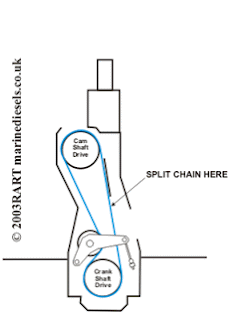visatron OMD

Most text books only cover the operating principle of the older type of Graviner oil mist detector. A lot of engines are fitted with the Visatron oil mist detector manufactured by Schaller automation. A venturi driven by low pressure compressed air draws the samples from the crankcase compartments. The samples from the crankcase pass through an oil droplet separator which removes any droplets of oil by centrifugal force before passing across the measuring track of the oil mist detector. A receiving photodiode converts the intensity of an infra red beam of light from an infra red light emitting diode into an electrical signal which is fed to the electronic evaluation unit. As the opacity of the sample increases so the intensity of the infra red beam being measured by the receiving photodiode will decrease. This will produce a lower electrical signal. To prevent the infra red filters becoming soiled by the crankcase samples and affect...







